Transfers:
ACHIEVING A 4-YEAR DEGREETRANSFER STUDENTS AT NOVA
THE TRANSFER STUDENT TRANSITION
NOVA enrolls over 70,000 students each year. Students attend NOVA for many reasons: to explore areas of study, complete job training or certifications, and/or save money on tuition. Many students enroll with the goal of transferring to a four-year institution.
Students on the transfer path often use their time at NOVA to prepare for the transition to a four-year school. These students pursue various programs of study and transfer at varying times. Many NOVA students will transfer after completing general education requirements and earning an associate degree.
NOVA students have transferred to public and private four-year institutions across the commonwealth and the country. NOVA provides structured support to help any student to pursue a four-year degree. Counselors and advisors are available to help each student navigate the transfer process and ensure a seamless transition from NOVA.
Nationwide NUMBERS

7 MILLION
community college students nationwide.1
8 IN 10
community college students intend to earn a bachelor’s degree.2
Tuition and fees at community colleges average only
36%
of the average tuition and fee bill at four-year public colleges.3


8 IN 10
community college students intend to earn a bachelor’s degree.2
7 MILLION
community college students nationwide.1

Tuition and fees at community colleges average only
36%
of the average tuition and fee bill at four-year public colleges.3
49%
of all bachelor’s degree graduates attended a community college in the last 10 years.4

64%
of students who earned an associate degree subsequently enrolled in a four-year institution within six years.5

OVER 40%
of transfers earned a bachelor’s degree within six years.2

49%
of all bachelor’s degree graduates attended a community college in the last 10 years.4
Why NOVA
NOVA graduates are surveyed each year about their college experience. Many recent graduates highlight the benefits of attending NOVA before transferring to a four-year institution.6
Why NOVA
NOVA graduates are surveyed each year about their college experience. Many recent graduates highlight the benefits of attending NOVA before transferring to a four-year institution.6








Beyond NOVA
The largest percentage of NOVA transfer students choose to enroll in a public, four-year university in the commonwealth, including:7

George Mason University

Virginia Commonwealth University

James Madison University
GUARANTEED ADMISSIONS
NOVA partners with over 50 colleges and universities to offer Guaranteed Admission Agreements (GAAs) to students who meet the pre-determined requirements. Students interested in pursuing a GAA should meet with a transfer counselor at NOVA to discuss options and requirements.
Each institution has unique requirements to qualify for a GAA, but most include:
- Earn a C or better in degree plan courses
- Maintain the minimum GPA required by the college where you wish to transfer
- Submit a letter of intent
- Earn an A.A. or A.S. degree from NOVA
NOVA partners with over 50 colleges and universities to offer Guaranteed Admission Agreements (GAAs) to students who meet the pre-determined requirements. Students interested in pursuing a GAA should meet with a transfer counselor at NOVA to discuss options and requirements.
Each institution has unique requirements to qualify for a GAA, but most include:
- Earn a C or better in degree plan courses
- Maintain the minimum GPA required by the college where you wish to transfer
- Submit a letter of intent
- Earn an A.A. or A.S. degree from NOVA
ONLINE RESOURCES
SAVE BIG BY STARTING AT NOVA
Students can save thousands of dollars in tuition costs by attending NOVA for their first two years of college.
See how annual tuition at NOVA compares to that of popular transfer institutions across Virginia.8

*=Private college or university
NOVA TRANSFERS
Thousands of NOVA students transfer to a four-year institution in Virginia every year. That number has been steadily increasing, thanks in part to NOVA’s commitment to supporting students who wish to pursue this path.9

POPULAR TRANSFER DEGREES
At NOVA’s most popular transfer school, George Mason University, many students pursue the following degrees:10
Applied Information Technology
Accounting
Criminology, Law & Society
Psychology
Nursing
Nursing
POPULAR TRANSFER DEGREES
At NOVA’s most popular transfer school, George Mason University, many students pursue the following degrees:10
Applied Information Technology
Accounting
Criminology, Law & Society
Psychology
Nursing
Learn More
Resources for Students, Faculty, and Staff
NOVA counselors and advisors are available on each campus to help students navigate the transfer process. Counselors and advisors can help students to choose a program of study, explore four-year institutions, and understand the requirements for Guaranteed Admissions Agreements. Additionally, counselors and advisors can help students with course selection and direct students to valuable support services such as tutoring and career advice. Students are encouraged to meet regularly with an advisor throughout their time at NOVA, especially as their academic and/or career plans evolve.
ON-CAMPUS RESOURCES
Counselors are available to help NOVA students navigate their coursework and the transfer process. Hours vary for each campus; visit www.nvcc.edu/advising for details.
- Alexandria: AA194 (ALCounseling@nvcc.edu)
- Annandale: CA105 (ANCounseling@nvcc.edu)
- Loudoun: LR253 (LOCounseling@nvcc.edu/a>)
- Manassas: MH110 (MAcouns@nvcc.edu)
- MEC Springfield: HE202 (MECounselor@nvcc.edu)
- Woodbridge: WC202 (WOCounseling@nvcc.edu)

Suggested Transfer Timeline

4 Semesters Before Transferring
- Meet with a transfer counselor or advisor to discuss academic programs and majors
- Browse the Guaranteed Admissions Agreement website to learn more about partner schools and their requirements
- Familiarize yourself with the general education requirements at the schools where you might want to transfer and take these courses as early as possible

3 Semesters Before Transferring
- Continue to meet with your counselor or advisor to stay on track towards graduation
- Decide on your preferred schools and plan campus visits
- Stay updated on general education requirements and deadlines for preferred schools
- Complete a GAA letter of intent, if required

2 Semesters Before Transferring
- Submit your admissions application(s) to your preferred school(s)
- Apply for scholarships, financial aid, and housing (Be sure to look into the Virginia Two-Year College Transfer Grant)
- Continue enrolling in courses required to transfer

1 Semester Before Transferring
- Complete all required coursework in your program or major
- Apply for graduation
- Check your MyNOVA account to verify there are no outstanding holds to prevent you from graduating
Citations
- (2017). Retrieved from National Center for Education Statistics website: https://nces.ed.gov/fastfacts/display.asp?id=372
- Jenkins, D., & Fink, J. (2015). What We Know About Transfer. Columbia University, Teachers College, Community College Research Center.
- Handel, Stephen J., Williams, Ronald A. (2012). The Promise of the Transfer Pathway: Opportunity and Challenge for Community College Students Seeking the Baccalaureate Degree. College Board Advocacy & Policy Center.
- (2017). Snapshot Report: Contribution of Two-Year Institutions to Four-Year Completions. National Student Clearinghouse Research Center.
- (2017). The Role of Community Colleges in Postsecondary Success: Community Colleges Outcomes Report. National Student Clearinghouse Research Center.
- (2016, 2017). Comments received via the NOVA Graduate Survey. NOVA Office of Institutional Effectiveness and Student Success.
- (2017) 2015–16 NOVA Transfers. NOVA Office of Institutional Effectiveness and Student Success.
- (2017). Retrieved from Virginia Education Wizard website: https://www.vawizard.org/wizard/financing-college
- Retrieved from State Council of Higher Education for Virginia website: http://research.schev.edu/apps/info/CC_Feedback.Northern-Virginia-Community-College.ashx
- (2016). Transfer Trends and Patterns Series: Report 2. Northern Virginia Community College Office of Institutional Effectiveness and Student Success.
- (2017). Retrieved from National Center for Education Statistics website: https://nces.ed.gov/fastfacts/display.asp?id=372
- Jenkins, D., & Fink, J. (2015). What We Know About Transfer. Columbia University, Teachers College, Community College Research Center.
- Handel, Stephen J., Williams, Ronald A. (2012). The Promise of the Transfer Pathway: Opportunity and Challenge for Community College Students Seeking the Baccalaureate Degree. College Board Advocacy & Policy Center.
- (2017). Snapshot Report: Contribution of Two-Year Institutions to Four-Year Completions. National Student Clearinghouse Research Center.
- (2017). The Role of Community Colleges in Postsecondary Success: Community Colleges Outcomes Report. National Student Clearinghouse Research Center.
- (2016, 2017). Comments received via the NOVA Graduate Survey. NOVA Office of Institutional Effectiveness and Student Success.
- (2017) 2015–16 NOVA Transfers. NOVA Office of Institutional Effectiveness and Student Success.
- (2017). Retrieved from Virginia Education Wizard website: https://www.vawizard.org/wizard/financing-college
- Retrieved from State Council of Higher Education for Virginia website: http://research.schev.edu/apps/info/CC_Feedback.Northern-Virginia-Community-College.ashx
- (2016). Transfer Trends and Patterns Series: Report 2. Northern Virginia Community College Office of Institutional Effectiveness and Student Success.




